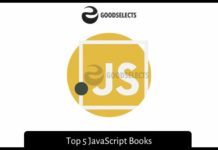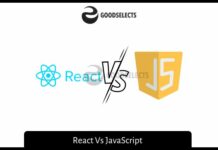A JavaScript chart library provides an intuitive and declarative API for mapping data fields to visual properties. Its architecture makes it easy to add reusable plugins to extend chart behavior. The data mapping capability is particularly appealing. You can customize chart behaviors by mapping data across multiple fields or by defining custom facets. You can use any of the libraries to create a specialized chart. In this article, we’ll discuss a few of the most popular ones.
AmCharts
The amCharts javascript chart library allows you to create interactive applications and dynamic user interfaces. With its lightweight data objects, amCharts is capable of running scores of charts on the same page without crippling your browser. The core functionality of amCharts is small and separated into separate files for each niche functionality. You can expect your charts to load faster than ever! Moreover, it supports ES6 modules, so it’s compatible with modern browsers.
AmCharts offers a comprehensive set of chart types and an interactive map with just a few lines of code. Its demos demonstrate its full feature set and excellent interactivity. Its documentation is thorough, and it supports a variety of frameworks. Its price range starts at $180 for a single website license, which includes a variety of charts including geographical maps. It has good customer support, with response time less than three hours.
The new v5 release includes updated styling and interactive features. The canvas provides better performance, but the sample code uses string-based XML, which may be less practical. Nonetheless, the API is well-documented and its 173-page user guide is available for download. The library is free for branded charts and costs a modest license fee for others. The developer’s documentation includes examples of how to use the API, as well as tutorials for code snippets and the property API.
Chartist
There are many advantages of using the Chartist javascript chart library. In addition to allowing you to use standard DOM events such as the draw event and mouse movement, it also offers advanced chart features. Unlike other chart libraries, this one is open source and lightweight. It also makes use of SVG to make chart objects as handy as DOM objects. Here are a few things to keep in mind when using Chartist.
First of all, Chartist has a flexible and responsive UI. It also supports responsive charts and includes advanced features like data animation. Chartist can be downloaded from Bower, NPM, or your content delivery network. It is also available as a CommonJS or AMD module, or even as a global window object. Once you’ve installed Chartist, you can start using it in your project. You’ll have a wealth of options to add to your website.
The Chartist JS library is also easy to use, offering an intuitive way to display data. It was designed with responsive and scalability in mind. It also comes with enterprise-grade features. Support for R, Python, and 18 different data sources, including Excel and CSV files. Another great option is AnyChart, which has more than ten thousand users and a feature set that’s perfect for the average web developer. The library includes features such as the Venn Diagram, Mosaic Chart, Tag Cloud, and Waterfall Chart, among others.
HighchartTable
In addition to the standard Chart object, you can also use the jQuery HighchartTable JS to create interactive charts. HighchartTable JS accepts HTML tables and transforms them into interactive charts. jQuery parses the data and Highcharts JS draws the graph. You can also find usage instructions in the package. In the example below, I used a table of sales data.
The HighchartTable JS library is a javascript chart library that allows you to create interactive and beautiful charts. It has gained popularity among tens of thousands of developers, including 61 of the world’s largest companies. The library has a flexible API and is free under the Creative Commons 3.0 license. For more information, visit the official website. You can download the latest version for free here.
While most charting libraries can handle static data, dynamic data might require a more detailed chart. Dynamic data, on the other hand, might require more time to organize and manage, so it may be better to use a javascript chart library. The latter may also make manual tweaking obsolete. But this is just one of the advantages of Highcharts. Just make sure to use a jQuery-compatible chart library.
Dygraphs
While most other javascript chart libraries rely on Java or a JSP for their visualization, Dygraphs is an exception. Its primary maintainer, Dan Vanderkam, is a senior software engineer at Sidewalk Labs. In addition to writing the code, Vanderkam encourages outside contributors to contribute to his project. He has made updates to Dygraphs over the past year in fits and starts, and in the process has come up with some interesting features that make coding easier.
For data visualization purposes, Dygraphs is a great option. It can handle millions of points and is highly interactive out of the box. It also supports confidence intervals and error bars. The library is highly customizable and works well with any major browser, including mobile devices. Its open source development makes it easy to find examples and help online. Another benefit is its active community. There are many tutorials available on how to use Dygraphs.
Another option is Flot, a JavaScript library for creating and animating plotting diagrams. Flot also allows you to stream data, making your graphs appear more dynamic. It doesn’t take much time or money to create your first graph online. There’s a wide range of examples available to help developers understand the library. And once you’ve got a working code base, you’ll be on your way to building interactive applications.
FusionCharts
The FusionCharts javascript chart library contains a number of useful attributes for creating interactive charts. The dataSource attribute contains the actual data to plot, while the dataArray carries the contents of child-charts. This attribute is customizable, with over one hundred attributes available. In addition to this, users can also style the tooltip with custom CSS and HTML. This article will cover the details of the features available with FusionCharts.
The product’s robust set of charts and maps includes data visualization for a variety of applications, including governmental dashboards and online business. FusionTime maps feature data related to population growth, sales, and business locations. The library also has support for plotting data related to shipping routes, fertility rates, and other topics. Additionally, the library offers a host of customizable chart templates in HTML5 format. The documentation for FusionCharts is extensive and updated regularly.
The chart library supports both real-time and historical data. Real-time data can be displayed through its data feed method. The API reference includes live examples and full code. Whether you’re a beginner or an expert in JavaScript charting, FusionCharts is a great tool to have. You can even use it to create interactive business dashboards and interactive charts. The best part is that FusionCharts is free!
Flot
Flot is a pure JavaScript chart library that is compatible with jQuery. It focuses on combining simple usage, attractive looks, and interactive features. It produces graphical plots of arbitrary datasets on the fly. In this article, I’ll cover the basics of using the Flot jQuery chart library. But first, let’s talk about its shortcomings. Flot’s main drawback is the lack of zooming. Flot does, however, have some features that make it a solid choice for many users.
Flot has three primary options for drawing chart types. By default, a plot will show lines. You can select points or bars to draw, and you can even configure each type separately. The “lineWidth” property defines the thickness of a line in pixels. If you don’t want a line to appear, set it to zero, which will hide its shadow. However, if you need to use a specific data type, you may not want to use this setting.
Flot can handle different types of events. Typically, the most important event is a chart’s label. But if you want to draw a specific type of chart, use a different library. For example, you could use the “label” property to change the color of the lines. Flot doesn’t provide a default font, but you can set it to whatever you want.






































